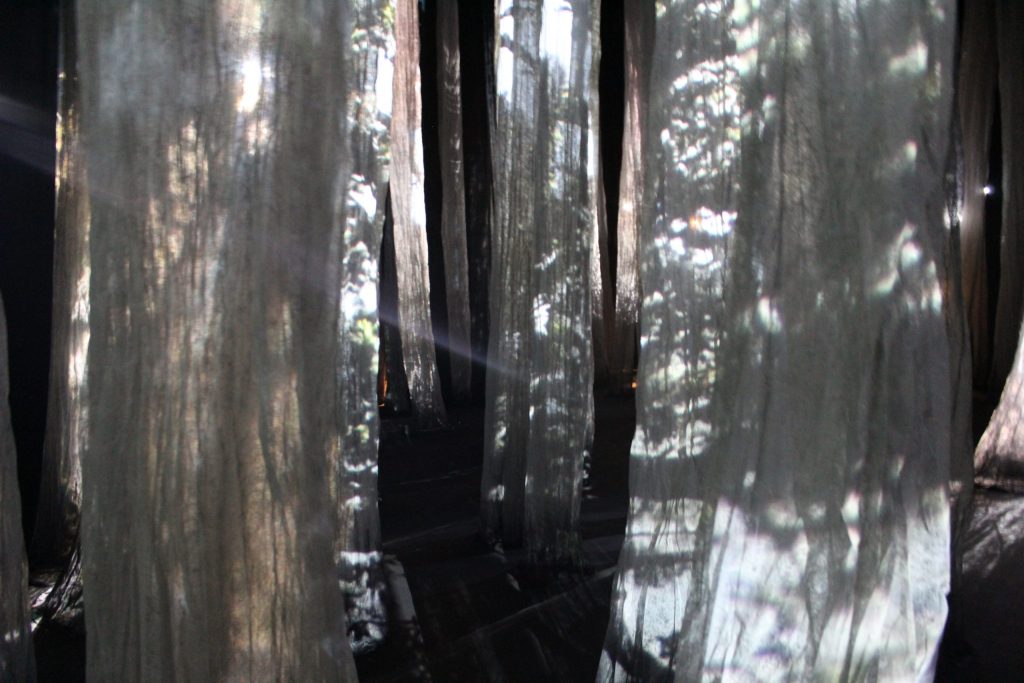France is back in lockdown, which means I have a lot of time to sit in my apartment and think about all the wonderful sights there are to see in this country. I was fortunate to visit a lot of museums and monuments over the summer and fall months. Some for the first time. Others, not so much. But I loved every visit equally. Which got me thinking. I know I love visiting these sites because I have a passion for history. But what about the people who don’t love history as much as I do? How can these sites and monuments spark their imagination and curiosity? The more I thought about it, the more I realized that it is possible to reinvent history in wonderful and creative ways. In fact, I’ve seen this in action already. Below are my favourite examples of this from the year so far.
A Summer of Light
I’ve already written about my trip to see the Chartres light show. What I didn’t mention was that this wasn’t the only illumination spectacle that I experienced this year. I also saw the light show on the Strasbourg Cathedral, and I had aspired to see the one in Amiens before the weather derailed my plans. But these are far from the only light shows that are on display every summer. Cathedrals and historical buildings all over the country host these incredible exhibitions every year. Shows are free to watch, and they are stunningly beautiful. More importantly, they inspire countless people every year to come and appreciate these historic sites in a whole new way.
Bringing Masterpieces Together
The masterpieces of the art world are located in museums throughout the world. Meaning it’s almost impossible to see them all in one location. That being said, the technology now exists to digitally recreate paintings and artwork in countless different ways. Which is exactly what digital art centres like the Atelier des Lumières are doing. I’ve seen two exhibitions at this cultural space since it opened in Paris in 2018, and both were incredible. Last year’s exhibit presented the works of Vincent Van Gogh, while this year focuses on the Impressionists of the Mediterranean. In both instances, over 100 masterpieces were brought together in one location. Even better, they were presented as part of a new artwork that incorporated projection technology, digital mapping, and musical scores. The result is an extraordinarily immersive experience that allows you to appreciate these artworks in a way I never thought possible.
Creating a Forest in a Church
Perhaps my favourite example of how we can reinvent historical sites for a modern audience is something I experienced while visiting a church in Angers. The Collegiale Saint-Martin is one of the best preserved Carolingian monuments in the country. The church dates back to the 12th century, and the ruins in the basement date back to the time of the Romans. I had put this monument on my to see list because of the Roman ruins, as let’s face it. I’m a sucker for anything to do with the Romans. However, when I arrived at the church, I was in for a wonderful surprise.
A mere three days prior to my arrival, a brand new art installation had opened in the main nave of the church. The installation was called Sylva, and it had been designed by the art collective Lucie Lom. I’m actually not entirely sure how to describe it, and the picture above simply does not do it justice. The entire church was draped in blackout curtains, and translucent fabric hung from the ceiling in the shape of trees. As you walked through this ‘forest’, lighting effects and projections were displayed on the trees, and an ethereal soundscape played in the background. Again, I’m not sure I can accurately describe the effect of walking through this art installation. All I can say is that it literally took my breath away upon first entry. It was an extraordinary experience, and as such, I will never forget my visit to that church.
Reinvent History to Inspire the Future
At this point, no one knows when we will all be able to travel freely again. I hope it is sooner rather than later, because France has so much history to offer its visitors. And if you are one of those people who don’t spend their free time reading 500 page history books, that’s okay. Museum curators, artists, and countless other people who are far smarter than me are creating new and exciting ways to make history come alive for you. To present the masterpieces of the world in ways you’ve never seen before. It’s exciting to think of all the ways it’s possible to reinvent these sites going forward. Personally, I can’t wait to see what’s next. I hope you feel the same. Or, at the very least, I hope I’ve stoked your curiosity, even if just a little bit.
Laura Moore is a professional storyteller who loves history and the many stories that make Paris one of the most fascinating cities in the world. Join one of her signature tours to learn the story of a city.




